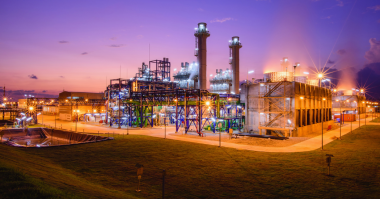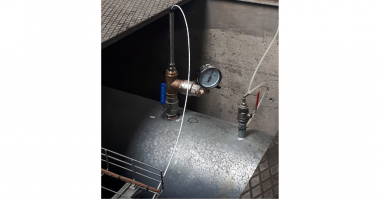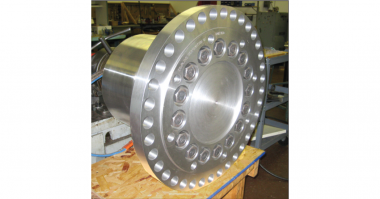Author: Steve Chwyl, Freelance Mechanical Specialist, Planner, Millwright
Disclaimer: I am not the absolute “know everything about everything” when it comes to the installation of process equipment. However, I do want to share some knowledge and create conversation about this topic. In the past I have represented the end users or have done the construction myself and here are some lessons.
CHAPTER 1- PRESERVATION
Before we run off and start landing pumps, we will have to walk first! This topic is very important because depending on who the EPCM or Equipment owner is, the topic of preservation can either be hidden or extremely detailed in the scope of work. We have seen in the past where some companies will sneak the in preservation in the Inspection and Test Plans (ITP) which usually states “Follow OEM storage recommendations.” This is a great time to get clarity from the owners and send an RFI (Request For Information).
You may want to ask some questions such as:
- Is the equipment arriving on site fully preserved?
- Has it been preserved for our conditions on site (heated, cold, wet or dry etc.)?
- Has it been preserved from Factory for short-term or long-term storage?
- Would you like us to do long term storage?
- Then with the clarification you can ensure the avoidance of an NCR (Non-Conformance Report).
Now you know that preservation is your responsibility while you hold the TCCC (Total Care Control and Custody) of these assets, how do we do this? Best way is to always refer to the OEM manual; they usually have a storage chapter and your local rep will be able to confirm your plan. The type of equipment and climate will determine how preservation is executed. For the purpose of this blog, we will pretend we are working with a standard axially split pump and electric motor package.
Hooray, the day is here! Our pump, base, motor and extra crates arrive on your construction site. We know already that through the RFI that the equipment came straight from the OEM and has no preservation. The customer has requested you to do long-term preservation, and you confirmed your plan with the OEM (Ensure that you save the emails from the OEM to give to the client at turnover for warranty assurance).
Check 1-Take pictures of everything you receive. Check for rust, open the flanges on the pump to inspect, take photos inside the bearing housing if possible. If pump has been factory/hydro tested, there could have been residual moisture left over causing rust and pitting in the pump before you received it.
Check 2– If possible put a dial on any shafts and perform a quick run out check to ensure nothing was bent during shipment
Check 3– The crates hold always hold such treasures, you never know what you will get. There could be capital spares such as rotors, impellers, shims, couplings and more. Take inventory of these spare parts and confirm any special preservations needed. We hope that rotors get sent in special made coffins under an N2 blanket, but most often end up in a wooden crate not intended for long term storage.
What are some common ways to preserve equipment and parts?
After you confirm with either the OEM or client on how they want this process done, here are some suggestions depending on environment and length of storage:
Rotational Checks– The manufacturer usually dictates this section in their manual. They will ask you to perform a rotation of the shaft at a given amount of time. They will usually also specify how many times to turn it. Sometimes it can be 1 ¼ or maybe even 12 ¼. Why that extra ¼ you ask? This will ensure that bearings or seals never land on the same spot while in storage. This can also apply to commissioned equipment that may not be running for operations, as this prevents false birnelling.
Fogging and N2 Blankets– Rotors and bare steel can rust fairly easily depending on environment, so the client or OEM may specify that the equipment should be fogged with a VCI (Vapour Corrosion Inhibitor) with a special tool or to displace the air by filling the equipment with nitrogen.
Coatings– There are many types of rust inhibitors, such as sprays or waxes, that can be put on shafts or other machines surfaces to prevent rust.
Desiccants– These bags of beads act like moisture absorbents and keep extra humidity from building up inside of the equipment, crates, junction boxes or bags.
VCI Wrap– One of my favorite ways to keep spare parts (such as seals, couplings or small parts) free from corrosion are rolls of VCI plastic. These plastics sheets (or bags) are embedded with an emitter that consistently gives off a vapour corrosion inhibitor to protect wrapped parts.
VCI Fluids– Probably one of the most common way to preserve your bearing cavities is a VCI fluid. These products also give off a type of corrosion inhibitor that prevents rusting. Either can be purchased pure in a pale that gets mixed in with running fluid or premixed VCI – which you pour directly into the cavity.
Space heaters– Depending on the pump and motor, some maybe equipped with block heaters. Ensure that these are plugged in and check regularly that they are on. These heaters are meant to keep out extra moisture from building inside of sealed components.
Other parts to consider are spare rubber parts such as O-ring and stators. Some require cool horizontal storage or even a mineral oil bath. Confirm with the OEM and client before taking these steps.
Keep documents on everything you do. Have your techs complete inspections reports, detailing ‘when and what they did’ to preserve the equipment. Sign off what dates the assets were inspected and/or rotated. These will be needed for the customer at turnover in case there is a failure on start up or warranty work in the future.
Well I think this chapter is done, its short but important because you need to cover your… Behind. Whether you’re a new project manager, estimator or tech, you now have some insight on preservation. This is more of a chapter to make you think “is this equipment preserved and is it our responsibility?” The whole idea is to show your customer that you are professional, that you care, you think critically and most important – avoiding any NCRs or blame for any equipment failures.
If any questions about the above article, please contact Steve at steve@nextpro.ca.





Comments